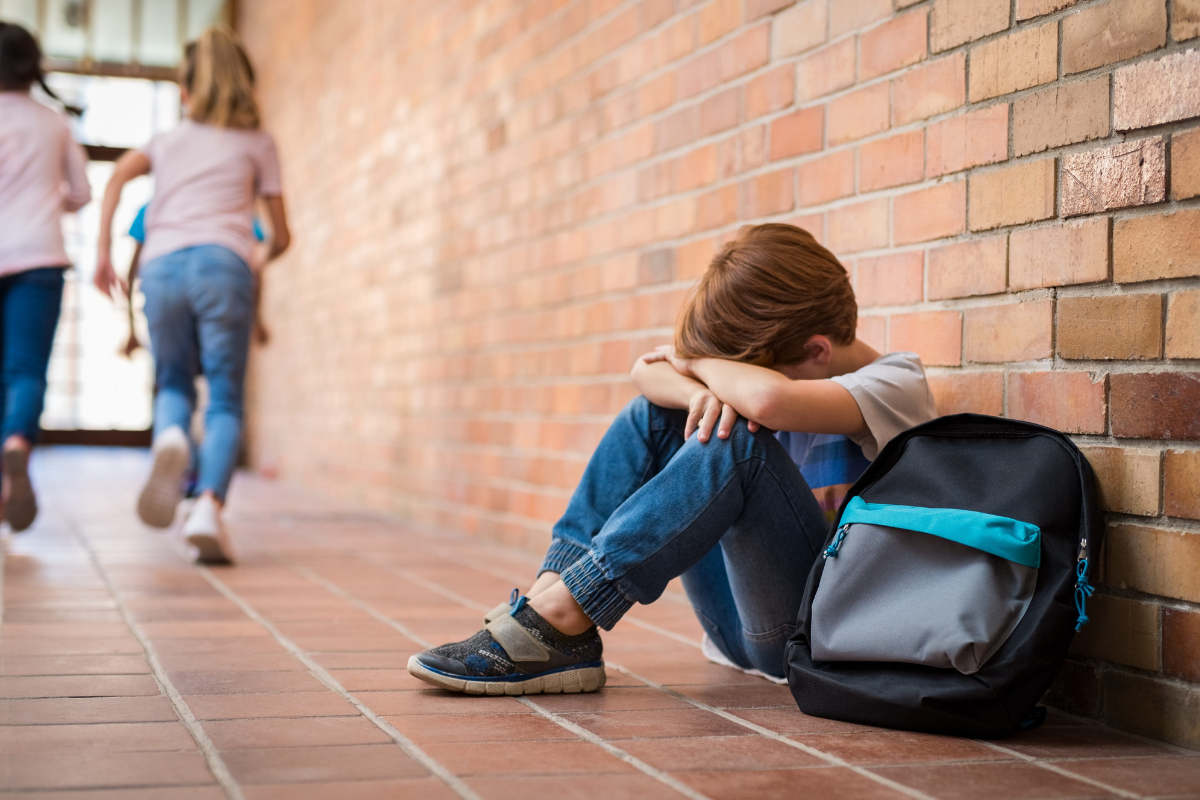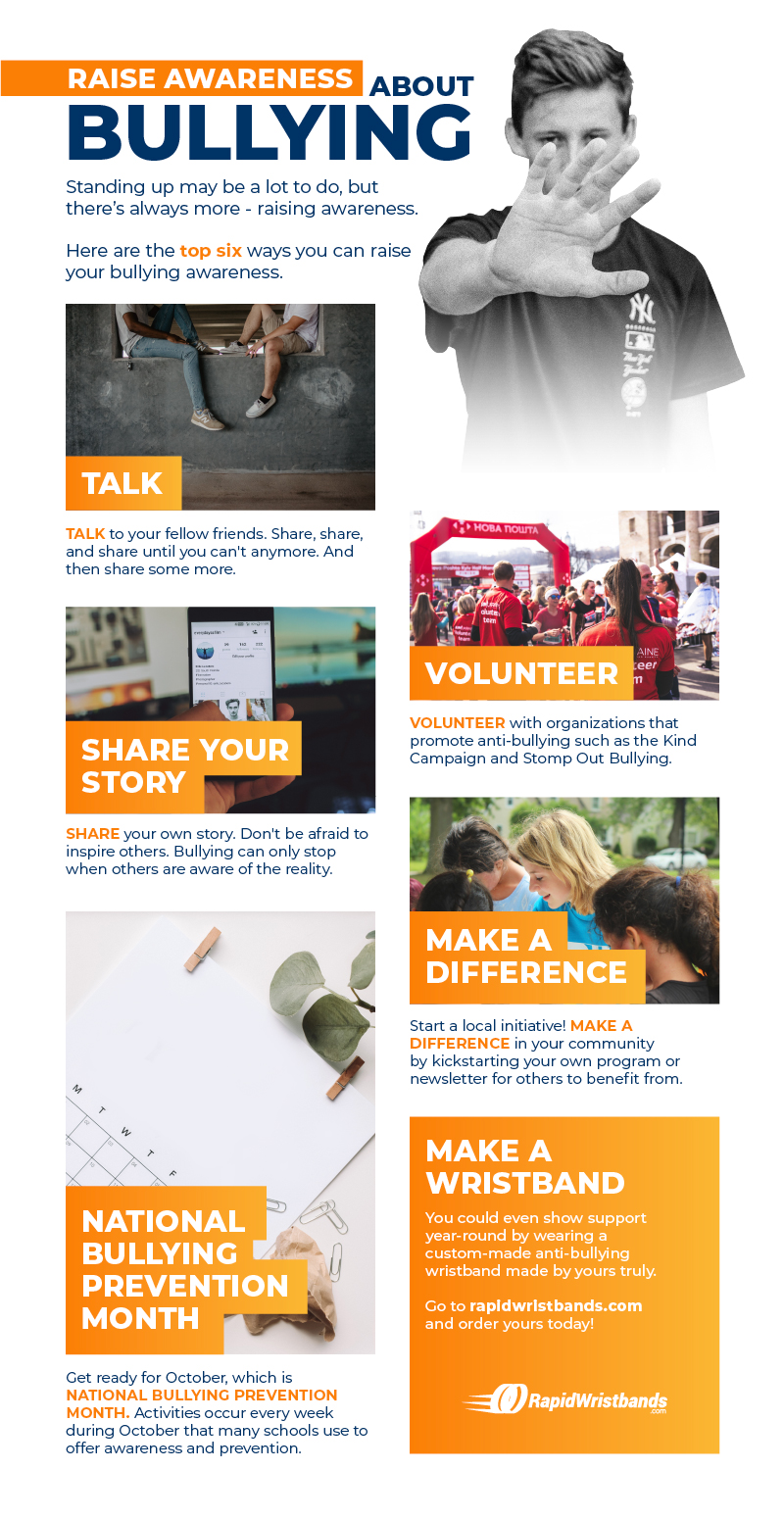
In middle school, I was one of only two kids with red hair. There was a gorgeous, popular girl with long auburn hair that had fiery highlights, and then there was me: a short, skinny skater kid with hair that looked orange in the sun, and like fire engine indoors. I was an instant target for bullies, and as if on cue, they lined up to torture me and make my life miserable.
Unfortunately, in the late ’80s and early ’90s, the common response to bullying was either to ignore it, saying, “boys will be boys,” or to rebuke the victim by insisting that being a “tattle-tale” was somehow worse than being a bully.
Thankfully, attitudes have changed. We are moving toward a more just, kinder society, but there is still more that we can do.
What Is Bullying?
Bullying is a repeated aggressive behavior - physical or verbal - where one person or group in a position of power deliberately intimidates, abuses, or coerces an individual with the intention to hurt that person, physically or emotionally. (1)
28% of U.S. students in grades 6–12 experienced bullying (1) and 20% of U.S. students in grades 9–12 experienced bullying. (2) It could be a stranger, neighbor, or even your best friend. And it can be harmful.
To determine if an incident is a conflict or bullying, look for all 3 of these characteristics:
- Intentional - the behavior was aggressive and a deliberate attempt to hurt another person.
- Repeated - these aggressive actions occur repeatedly over time to the same person or group of people.
- Power imbalance - the person bullying has more physical or social power than the child or children being bullied.
Types of Bullying
Anyone, children or adults, can experience many types of bullying. Some types are obvious, while others can be more subtle. (3)
1. Physical
Physical bullying includes hitting, kicking, tripping, pinching, pushing, or other forms of violence, including damaging property.
2. Verbal
Verbal bullying includes name calling, insults, teasing, mocking, intimidation, homophobic or racist remarks, sexist remarks, or verbal abuse. While verbal bullying can start off harmless, it can escalate to levels which start affecting the individual target.
3. Social
Social bullying is often harder to recognize and can be carried out behind the bullied person's back. It is designed to harm someone's social reputation and/or cause humiliation. Social bullying includes:
- Lying and spreading rumors
- Negative facial or physical gestures, menacing or contemptuous looks
- Playing nasty jokes to embarrass and humiliate
- Mimicking unkindly
- Encouraging the social exclusion or “leaving out” of someone
- Damaging someone's social reputation or social acceptance
4. Cyber
Cyberbullying is overt or covert bullying behaviors using digital technologies, including hardware such as computers and smartphones, and software such as social media, instant messaging, texts, websites and other online platforms. In fact, 15% of high school students (grades 9–12) were electronically bullied in the past year (4) and 55.2% of LGBTQ students experienced cyberbullying. (5)
Cyberbullying can happen at any time. It can be in public or in private and sometimes only known to the target and the person bullying. Cyberbullying can include:
- Abusive or hurtful comments, texts, emails, or posts, images or videos
- Deliberately excluding others online.
- Nasty gossip or rumors
- Imitating others online or using their log-in.
No matter where you are, bullying can happen, and if not monitored, it can escalate quickly.
Facts About Bullying
- Approximately 30% of young people admit to bullying others in surveys. (6)
- Defining "frequent" involvement in bullying as occurring two or more times within the past month, 40.6% of students reported some type of frequent involvement in bullying, with 23.2% being the youth frequently bullied, 8.0% being the youth who frequently bullied others, and 9.4% playing both roles frequently. (7)
Signs of Bullying
Even though not all children exhibit warning signs, there are telltale indicators that could be going on. (8)
There could be unexplained injuries, destroyed property, faking illness, difficulty sleeping, loss of interest in school, changes in eating habits, loss of friends or avoidance of social situations, feelings of helplessness, and self-destructive behaviors.
Kids may be bullying others if they are violent, friends with other bullies, blame others, are competitive, have unexplained extra money or items, get sent to the principal's office frequently, and don’t take responsibility for their actions.
Be on the lookout for these warning signs and call for help if someone you know are having self-destructive behaviors, such as self harm and suicide.

Effects of Bullying
Everyone experiences bullies differently, but there are common consequences that each bullied individual has. (9)
Although some may be listed, more can take effect, such as symptoms of anxiety, feelings of shame, social isolation, psychosomatic symptoms (physical ailments with no medical cause) and even bedwetting.
But long-term effects can soon escalate. Bullied victims face the reality of having depression, PTSD, substance abuse, poor general health, and even suicidal thoughts.
For the bully, he or she may have poor school performance, increased truancy risk, substance abuse, and maybe even child abuse at home. A lack of education and employment is also a strong long-term effect.
How to Prevent Bullying
Fortunately, there is a way to stop bullying altogether. The help of parents, school staff, and caring adults can always make a difference. Even students and peers can step up. The best ways they can help is to: (10)
- Help kids understand bullying. Talk about what bullying is and how to stand up to it safely. Tell kids bullying is unacceptable. Make sure kids know how to get help.
- Keep the lines of communication open. Check in with kids often. Listen to them. Know their friends, ask about school, and understand their concerns.
- Encourage kids to do what they love. Special activities, interests, and hobbies can boost confidence, help kids make friends, and protect them from bullying behavior.
- Model how to treat others with kindness and respect.
and most importantly, stop bullying on the spot. When bystanders intervene, bullying stops within 10 seconds 57% of the time. (11)
Get police or medical attention if a weapon is in use, there are serious threats, hate-motivated violence (homophobic or racist), bodily harm, or illegal acts are involved.
In addition, making sure you intervene immediately, separating the kids involved, making sure everyone is safe, reassuring the kids, and model respectful behavior is vital when approaching bullies.
Avoid the common mistakes of ignoring it, sorting out the facts, forcing testimonies, questioning in front of a group of people, talking to the kids together, and forcing apologies on the spot.
Bystanders to Bullying
Someone who witnesses bullying, either in person or online, is a bystander. (12) Friends, students, peers, teachers, school staff, parents, coaches, and other youth-serving adults can be bystanders. With cyberbullying, even strangers can be bystanders.
- 70.6% of young people say they have seen bullying in their schools. (13)
- 70.4% of school staff have seen bullying. (13)
- 62% witnessed bullying two or more times in the last month and 41% witness bullying once a week or more. (13)
The important thing is to not become a bystander. Only about 20 to 30% of students who are bullied notify adults about bullying. (14) Action is the best resolution when it comes to bullying. As a bystander, you can question the behavior, redirect the conversation, come in a group, walk with the person being bullied, and reach out privately and check in on the person.
Raise Awareness About Bullying
Standing up may be a lot to do, but there’s always more - raising awareness. Here are the top six ways you can raise your bullying awareness.
1.) Talk!
Talk to your fellow friends. Share, share, and share until you can't anymore. And then share some more.
2.) Volunteer
Volunteer with organizations that promote anti-bullying such as the Kind Campaign and Stomp Out Bullying.
3.) Share Your Story
Share your own story. Don't be afraid to inspire others. Bullying can only stop when others are aware of the reality.
4.) Make a Difference
Start a local initiative! Make a difference in your community by kickstarting your own program or newsletter for others to benefit from.
5.) National Bullying Prevention Month
Get ready for October, which is National Bullying Prevention Month. Activities occur every week during October that many schools use to offer awareness and prevention.
6.) Make a Wristband
You could even show support year-round by wearing a custom rubber wristband with a message! Go to Rapid Wristbands and order your anti-bullying wristband today!

Final Thoughts
Luckily, I survived my long years of bullying pretty much intact. I have suffered a few of the long-term effects, such as finding it hard to trust people, and aversion to groups of people I don’t know or trust, but I have largely turned my negative experience into a positive empathy and passion to see that no one has to suffer the way I did. Please do your part to stop bullying in its tracks.
Resources:
Centers for Disease Control and Prevention (2)
Naturalistic Observation of Peer Intervention in Bullying (4)
Warning Signs for Bullying (8)
Short Term and Long Term Effects of Bullying (9)
Naturalistic Observation of Peer Intervention in Bullying (11)
.png)
.png)
.png)


.png)
.png)

.png)
.png)
.png)
.png)
.png)
.png)
.png)
.png)
.png)
.png)
.png)
